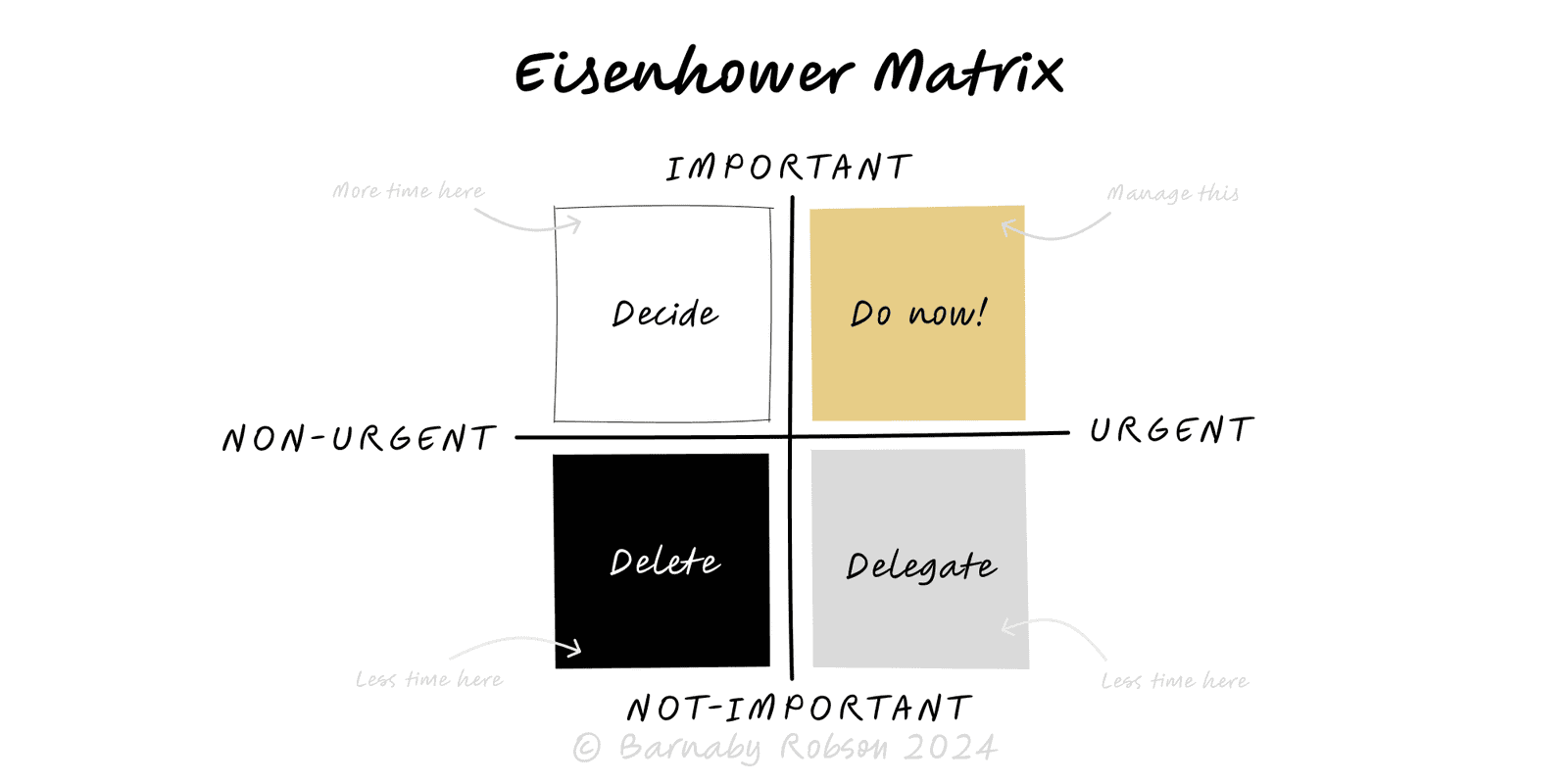Eisenhower Matrix
Dwight D. Eisenhower (popularised by Stephen R. Covey)

The Eisenhower Matrix sorts work by two variables: Importance (does it advance the goal?) and Urgency (does it require immediate attention?). Urgency grabs attention; importance creates results. By classifying tasks into four quadrants and applying a default action to each, you protect time for what matters and stop busywork from dominating.
Axis definitions
- Important – directly advances stated objectives or key results.
- Urgent – demands attention now (deadlines, alarms, interruptions).
Quadrants and default actions
- Q1: Important + Urgent — Do now (crises, hard deadlines).
- Q2: Important + Not Urgent — Schedule (planning, relationships, learning, prevention, deep work).
- Q3: Not Important + Urgent — Delegate/Deflect (most meetings, many emails, other people’s priorities).
- Q4: Not Important + Not Urgent — Eliminate (time sinks, doomscrolling, vanity tasks).
Personal and team weekly planning.
Incident and support triage.
Backlog grooming and sprint hygiene.
Meeting audits and inbox discipline.
State outcomes – write this week’s top 3 objectives; define “important” against them.
List tasks – dump everything; include meetings and recurring work.
Classify – label each item Q1–Q4 quickly; don’t overthink.
Allocate time
Q1: timebox today; create buffers for known spikes.
Q2: block calendar time; protect 2–4 hours of deep work most days.
Q3: delegate, decline, or convert to async; add rules (office hours, templates).
Q4: delete or set a small cap (e.g., 15 minutes at day end).
Engineer fewer Q1s – add prevention tasks (Q2) that reduce recurring fires.
Review cadence – daily 10-minute sweep; weekly reset with a fresh matrix.
Undefined “important” – without explicit goals, everything looks urgent; write OKRs or weekly outcomes first.
Urgency addiction – the adrenaline of Q1/Q3 crowds out Q2; protect deep work with hard calendar blocks.
Fake urgency – others’ poor planning becomes your emergency; use SLAs and escalation rules.
Over-granularity – classifying micro-tasks wastes time; group by workstreams.
Delegation theatre – dumping without context boomerangs; delegate outcomes, not chores.
Neglecting recovery – no slack means more Q1; schedule buffers.